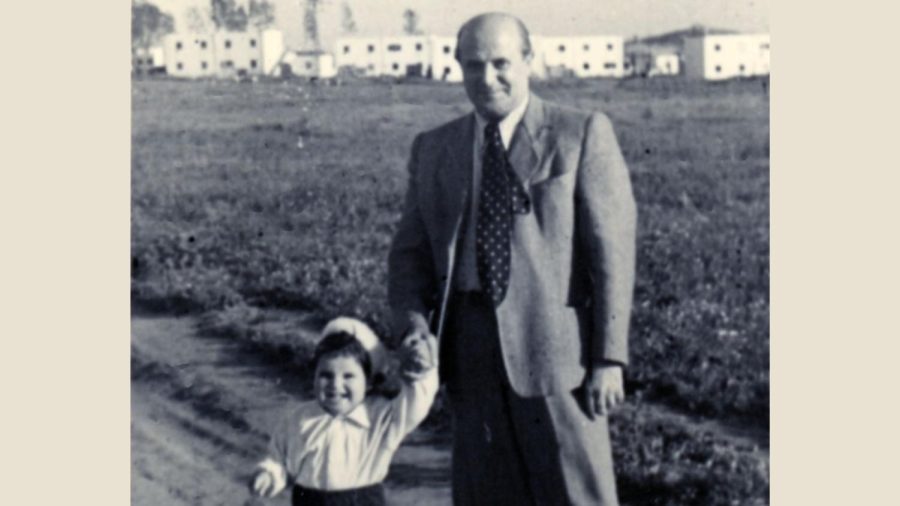Former St. Louis artist’s baby album for daughter documents Israel’s founding
Published April 26, 2023
Editor’s note: This article first appeared on “The Librarians”, the official online publication of the National Library of Israel. Check it out for more stories on Jewish, Israeli, and Middle Eastern history, heritage and culture. It is reprinted with the permission of the author.
My father David Friedman(n) 1893-1980, a prolific artist and Holocaust survivor, recorded his experiences in words, artwork and albums. He is renowned for his most important contribution — an art series depicting scenes he witnessed from deportation with his family from Prague to the Lodz Ghetto, further to Auschwitz-Birkenau, and the death march to liberation at Blechhammer in January 1945. His wife Mathilde and young daughter Mirjam-Helene did not survive. He returned to Prague to begin a new life, one without family. The strongest will of mankind, the will to live, gave him the power to start again from scratch.
He immersed himself in drawing and painting the scenes torn from his memory and held exhibitions to show his art to the world. Then a communist coup was carried out in February 1948, and shortly thereafter Czechoslovakia became a brutal communist dictatorship. The State of Israel was established on May 14, 1948. David Friedmann married fellow survivor Hildegard Taussig two weeks later at the Old-New Synagogue in Prague. Their marriage began at a refugee’s pace as they planned to flee.

I was born in Israel and named after my half-sister. My father made it his business to ensure his daughter would know her history. Several days after I was born in 1950, he wrote a diary for me, Tagebuch für Mirjam Friedmann (Diary for Miriam Friedmann). The diary was an introduction to my parent’s Holocaust experiences. However, the photo album was a creation of joy.
One senses his joy when compiling the first family photo album with handwritten and typed captions about his new life in a new country with Hilde and baby Miriam. The photo album also reflects a significant part of Israel’s founding history — the emigration of survivor immigrants starting over again with nothing but their strong will to survive and build a new life after the Holocaust. The immigrants were brought to an absorption center and crowded into tents without electricity and running water. The sanitary conditions were poor. They were exposed to rain and cold during the winter months and heat in the summer. Nevertheless, the survivors were free and eager to move forward.
Thus, the photo album was no ordinary creation. My father displayed artwork and typed stories of the first year in his new country. The drawings depicted three scenes after arriving in July 1949 in the tent city Shaar Ha’Aliyah by Haifa, and then Raanana. He enjoyed producing portraits and painting throughout Israel from 1950 to 1954, when our family left for America. David Friedmann captured the colorful landscape and experiences from the beginnings of the Jewish state. I hope to preserve my father’s artwork in an Israel museum for future generations to enjoy as much as me.
“After the Hasty Departure From Prague to Israel in July 1949”
(The following text was written by David Friedmann. It has been edited compiled and translated from German by his daughter Miriam Friedman Morris)
I was elated to read in the Prague Jewish newsletter that the State of Israel had been founded and that all Jews were called to immigrate as soon as possible, it was a land of freedom and many possibilities. Indeed, many of our friends and acquaintances immigrated. After experiencing more than our share of aggravation with the communists in every regard, Hilde and I decided to do the same.
The War Museum committee wanted to buy some of my paintings and they offered a good price. I was sitting down with high-ranking military men at the desk, and they told me how proud I could be that my works would be displayed in their museum. But my answer was no, I needed the works to be on exhibit in Israel and as they heard that, they jumped from their chairs so fast I became terrified. I said I am very sorry, but I cannot sell my paintings. A few minutes later they told me it would be all right for me to take my paintings home. However, by the look on their faces I could tell they were very angry.
I got into trouble over the artwork and the Czech government ordered an “export prohibition”. But I found an important official, himself an artist, and for 1000 Kc all the works were marked with a government stamp and this is how I was able to save my paintings for Israel. I arranged for a lift (a large wooden storage container) with a transport agency and the paintings along with furniture and belongings were shipped to Israel. Meanwhile we were registered for emigration.
Although we had prepared for a year, our hasty departure from Prague in July 1949 to Israel felt like fleeing. We had to leave an apartment with three rooms plus kitchen and hall, all with the most modern comfort. The Czech government permitted us to take only the equivalent of 2½ Israeli pounds, so you can imagine how difficult it was to start all over with nothing. However, our strong will to survive gave us enormous strength. After certain difficulties we reached the Czech border. The officers asked me where my paintings were and I told them they were in Prague. They searched all through our luggage, but finally believed me and let us go. We were joyful to have escaped the communists and had to sign that we renounced our Czech citizenship and never would return to this country. We changed to an Austrian train with Russian guards with extended bayonets. When the train passed the border, headed for Vienna, we fell to our knees, we were so happy to be free again, this time from the communists. On the Italian train soldiers bolted the doors. We were not allowed to leave the train for drinking water at the stops. The Italians behaved disgracefully towards us.
Therefore, not until Naples when we boarded the Israeli ship Eilath did we truly feel free.

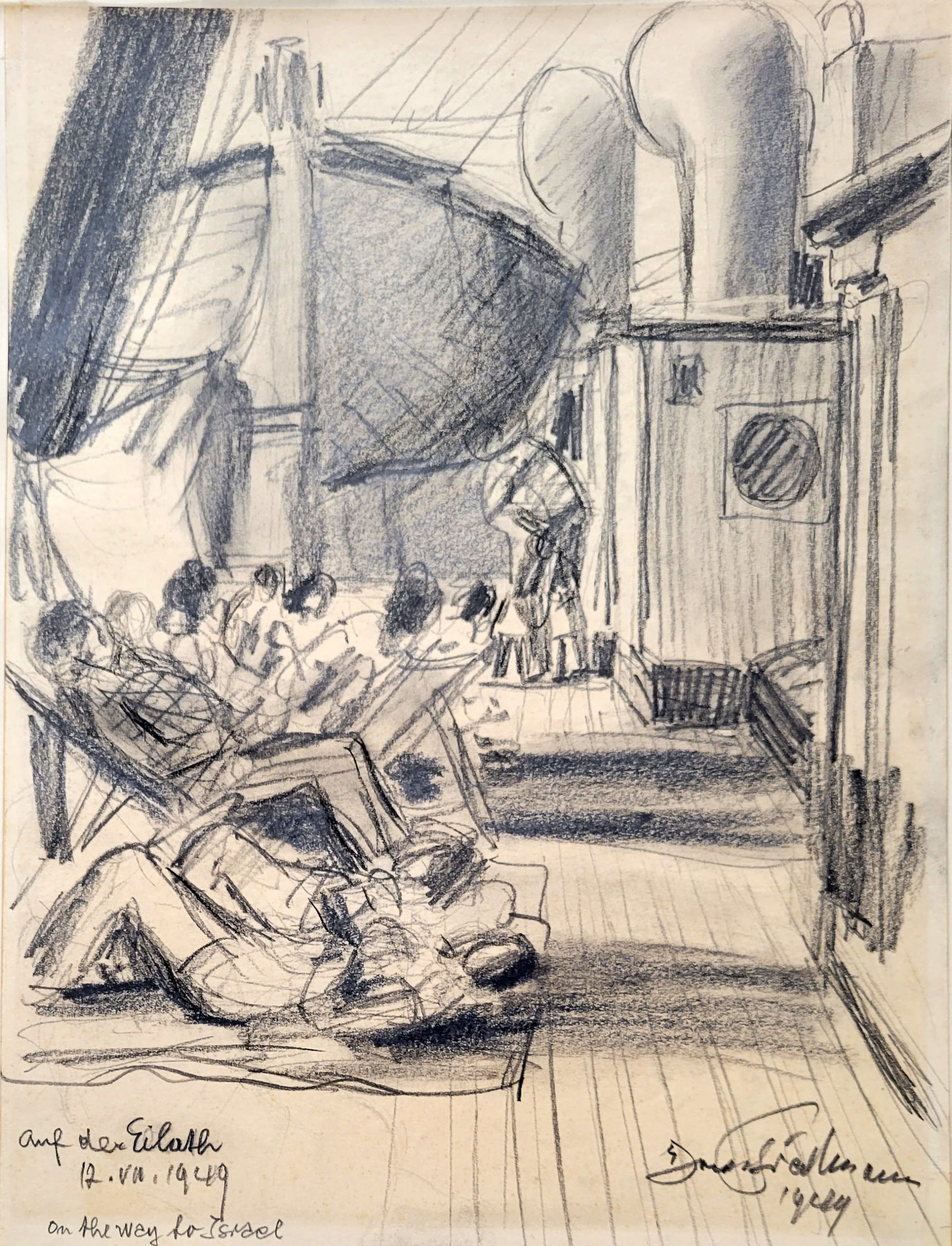
I earned my first Israeli pounds making some portrait drawings. The ship machines made a deafening noise. At night it was impossible to sleep a wink and our hammocks swung considerably. Most of the people slept on deck. The view of Haifa harbor was fantastic and I only wished I could paint it, regretfully this never came about. Then came the registration formalities. We were asked by an official if we belonged to a political party and we answered, “Zionist” and then he asked my age, and I replied 56 years, at which point he pronounced “not employable”. This astounded me and I said to Hilde in Czech, “How stupid this fellow is, he has no idea of my ability”.
Then we were loaded with our baggage on trucks and brought to the reception camp for newcomers “Shaar Ha’Aliyah” (The Gate of Immigration), a few kilometers from Haifa. Guards opened the gates and closed them behind us. Astonished, we saw we were surrounded by high barbed wire fences. Nobody was allowed to leave the camp without permission. We were strongly reminded of the Nazi concentration camps.
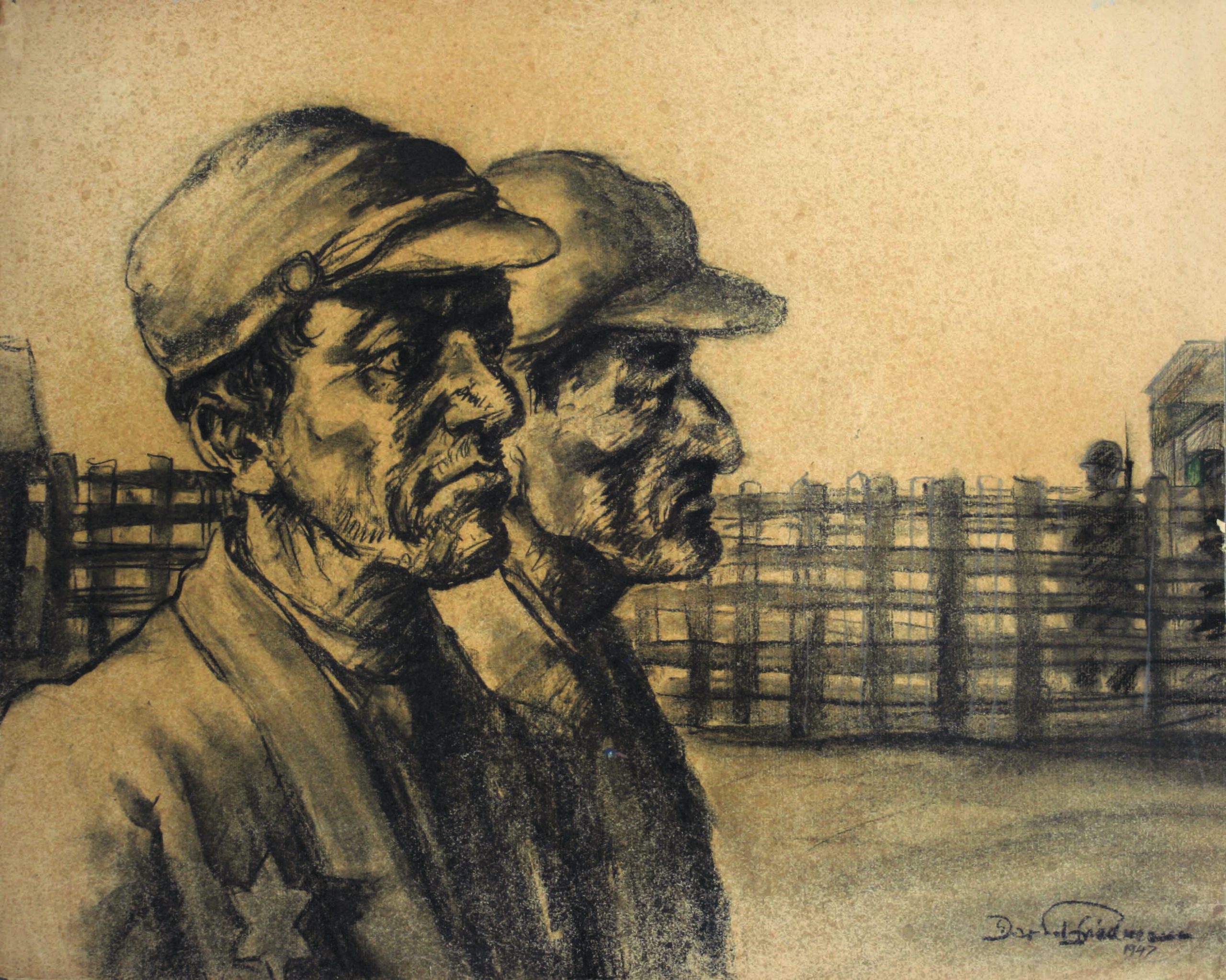
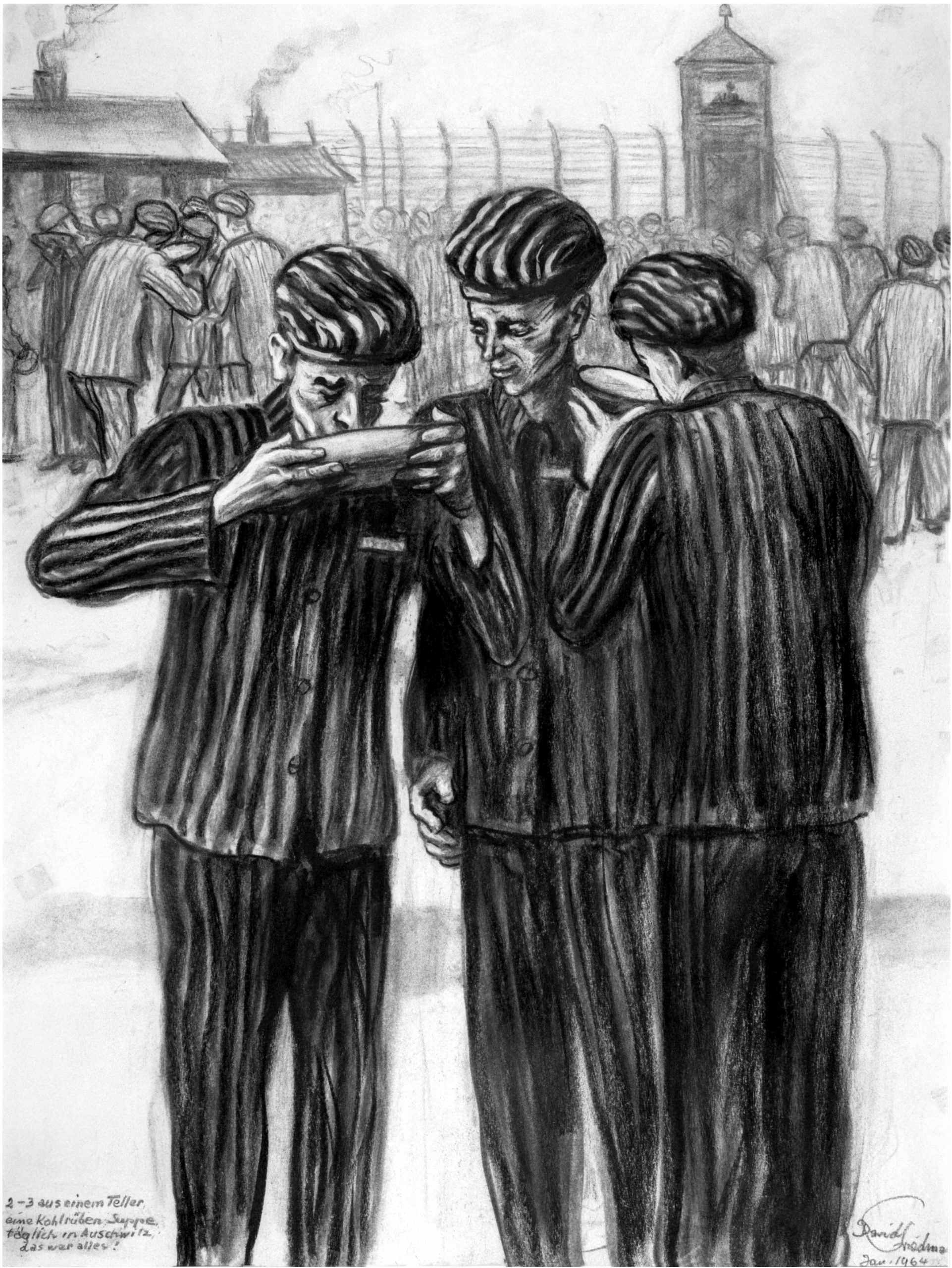
However, we were happy to no longer be exposed to communist antisemitism. As in the First World War and the Hitler years, I knew in advance I would survive. Each time I started over with nothing and now in Israel, I was sure I could succeed again with Hilde’s help. I still had ample reserves of energy at that time, as well as the necessary knowledge and ability in my profession as artist, painter and craftsman.

In Shaar Ha’Aliyah we were registered again, then examined for lice, powdered with DDT. Furthermore, we had to go barefoot through a milky liquid, probably also this DDT substance. I was very angry about all of this, however, we had to hold out. In the camp we searched for a free tent and there were plenty. The camp was dirty, stinking, and the food was terrible. We got food out of giant pails, standing in long rows, like with the Nazis. But the State of Israel was hardly one year old, and we knew over the years all would become better. We persevered with the help of Hilde’s sister (Else Taussig Löwy) and after one week we were transferred to the Beth Olim camp near Ranaana, where we also obtained a free tent. We received two iron bedsteads and straw sacks, which had been urinated on, one linen sheet for each, as well as an old gray blanket. We brought our baggage into the tent – and so began our new life.
The second day after our arrival in Shaar Ha’Aliyah, I found an opening in the barbed wire fence. Cautiously, I crawled my way out to freedom, having arranged with Hilde that I would be back some days later. In Haifa it was imperative I look up an old friend I knew from Berlin. I climbed on the bus to Haifa and looking at the advertising signs there, found his name written underneath. I went into the shop and the owner gave me the home address. I found him and he was very surprised and I became his guest. He gave me work and paid for sketches and portrait drawings. Wiser and with more money, I returned to my beloved Hilde, who was quite worried about me.
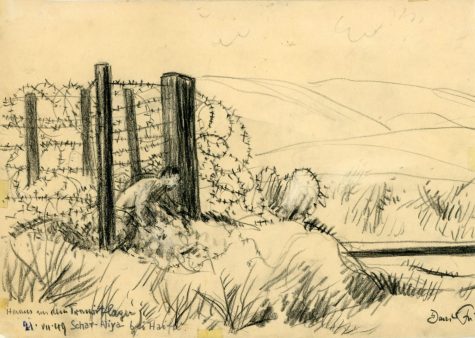
Now, Hilde could not stand it any longer. After ten years she finally wanted to see her sister who was living in Tel Aviv. Hilde knew where Else worked and the next day she took the bus there and immediately found Café Katz, on Ben Yehuda Street, known across Tel Aviv. Hilde sat herself down by a table. As Else began to pass her by carrying a tray of cups full of coffee, she recognized Hilde and let the whole tray drop to the floor, making a mighty crash. As the sisters kissed and held each other, the guests all clapped.
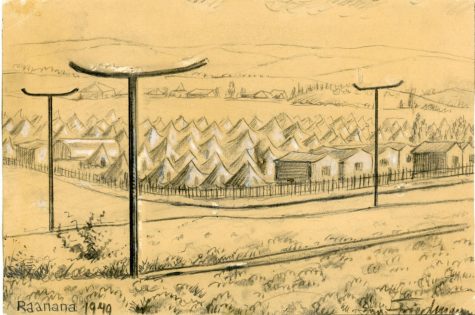
Beth Olim was a lively place full of screaming children. New immigrants from all over the world streamed into Israel, for example from Czechoslovakia alone there were 15,000. Everyone was crowded together because space was lacking and so a Belgian couple joined us in our tent, though they were pleasant people. Our new camp also had a fence because of the many children; however, it was without barbed wire and everyone could go in and out. For this reason, we often went to the city of Ranaana and met very nice people who ordered portraits or posters from me. We also went to the café where we could dance and have a wonderful time. After weeks of living in tight quarters a tzrif (wooden shack) became available. The tzrif was lightly constructed of crude planks. We were ordered by the administration to move in and we were very happy and finally, we also became Israeli citizens.
Hilde’s father Karl Taussig and second wife Elza, and child Judita immigrated to Israel before us — but only because of my urging did they register, otherwise they would still be in Prague today. Through an agency, his daughter Else found him a position in his vocation as chemist at the well-known company “Mekorot” where he worked as a water specialist until he retired. For all of us a very good beginning.
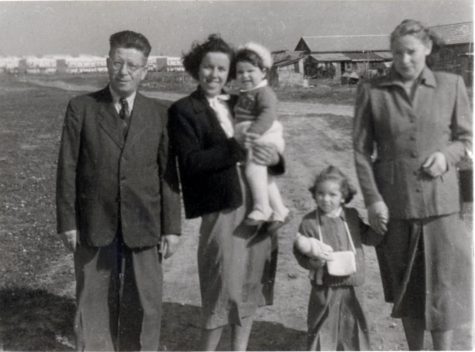
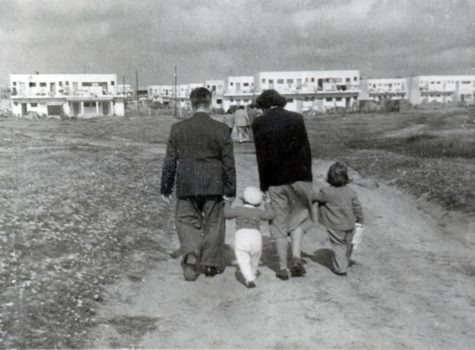
I can no longer recall all we experienced in Raanana, yet I would like to mention one occurrence that happened during a terrible rainstorm. The storm surprised us in the night, it poured in buckets, something like this we had never experienced. The rain washed under the barracks, the water flowed inside, and we all sprang up, because it reached the rim of the bed. However, this was not the end of it, as in charged a new heavy gale and the barracks tipped over on the side of another barracks. Now we ran out in our nightclothes and got soaking wet of course, before waiting out the rest of the storm with one of our neighbors. After a few hours we were able to return to our wet home. It was no longer possible to think of sleep, everything was drenched. In the early morning we carried our things to dry out in the sun.
For the long run, we did not want to live in a tent or shack. We looked at various possible apartments, but none pleased us. Then we were told in a short time a new village near Tel Aviv was planned and we could register if we had the 250 pounds down payment and the monthly rent of 6 pounds. However, we needed to hurry because a great number had already been sold. We were shown the building plans and the name of the place: Hadar Yosef, only 20 minutes from Tel Aviv.
At last, after a seven-month waiting period, we received news from the building administration we could claim our home. This was again a wonderful moment as we were loaded on the truck together with our luggage and we began the trip to Hadar Yosef.
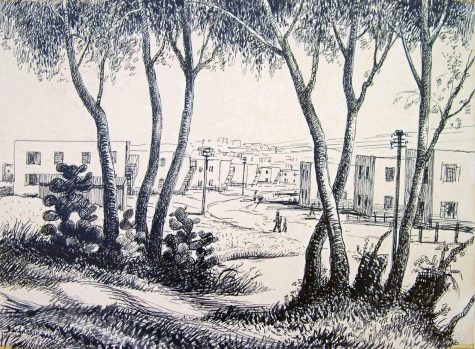
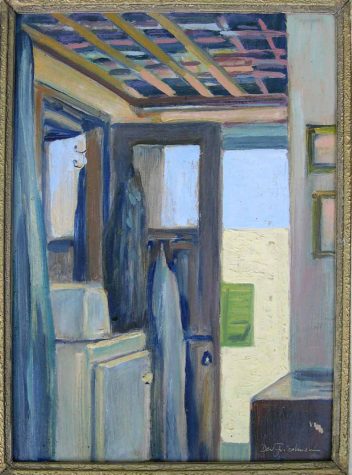
I telephoned Haifa and authorized the movers to transport our lift from storage in Tel Aviv to Hadar Yosef. In the meantime, we had to sleep on the bare floor, but this did not bother us at all. In the container was furniture for a one-room apartment with kitchen appliances and dishes, my pictures painted after liberation in 1945, including a large amount of (artist’s) material and my violin. After unpacking, we moved forward to the next phase of our life in Israel.
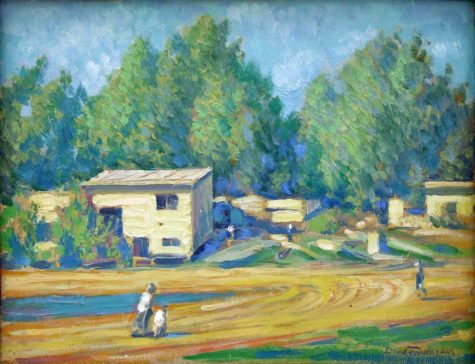
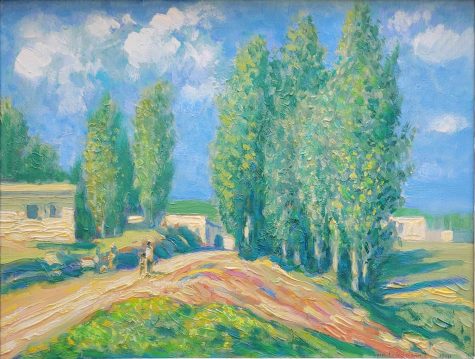
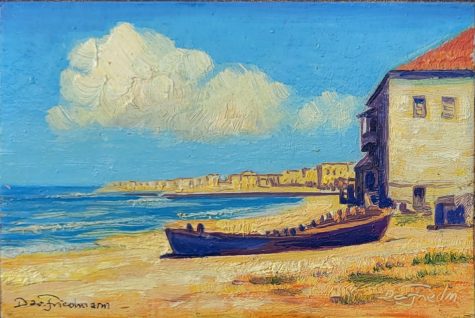
I had spoken with Hilde about having a child even back in Prague. This wish was not fulfilled until a year later in Israel. This completed our happiness because a child was yet missing.
Our wish became reality, for our beloved Miriam was born!!! Then together with our Miriam, life truly began in our new home, giving a new meaning to our life cycle, and this experience seems to have no end! These baby and childhood years were the most beautiful of our lives!!!
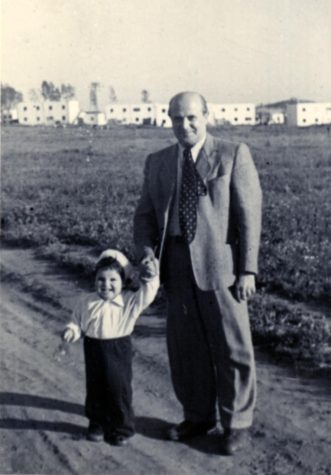
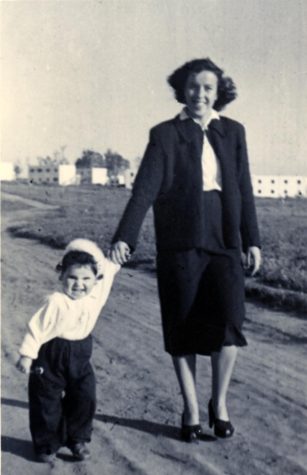
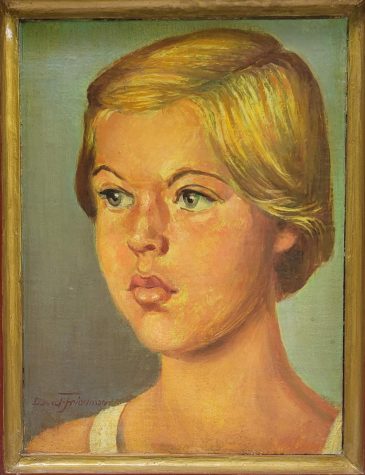
|
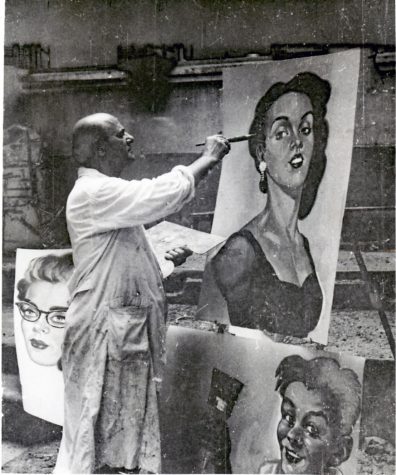
The Nazi regime nearly eradicated every trace of David Friedmann, but they did not succeed. Searching for lost art is gratifying and a priceless view into his life. I carry-on with my father’s mission to show his Holocaust art to the world. My goal is to continue to publicize his work through exhibitions, books and film to preserve his legacy for future generations. A new Holocaust documentary by Emmy Award Winner John Rokosny is currently in production with the working title, The Art and Survival of David Friedmann.
Photographs and artwork: The Miriam Friedman Morris Collection, New York
For more about David Friedmann and to provide information you may have about existing works, please visit: www.davidfriedmann.org or the “David Friedmann—Artist As Witness” Facebook page.



